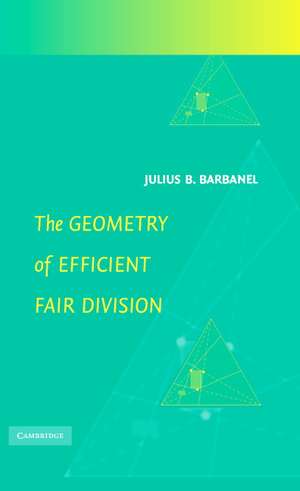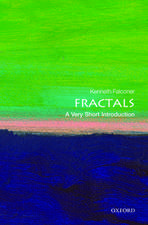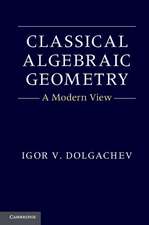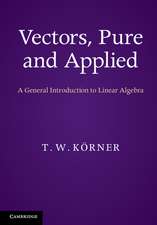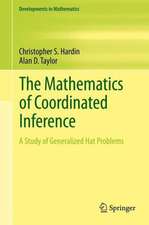The Geometry of Efficient Fair Division
Autor Julius B. Barbanel Introducere de Alan D. Tayloren Limba Engleză Hardback – 23 ian 2005
Preț: 1002.24 lei
Preț vechi: 1165.38 lei
-14% Nou
Puncte Express: 1503
Preț estimativ în valută:
191.80€ • 199.51$ • 158.34£
191.80€ • 199.51$ • 158.34£
Carte tipărită la comandă
Livrare economică 12-26 aprilie
Preluare comenzi: 021 569.72.76
Specificații
ISBN-13: 9780521842488
ISBN-10: 0521842484
Pagini: 472
Ilustrații: 73 b/w illus.
Dimensiuni: 157 x 235 x 30 mm
Greutate: 0.74 kg
Ediția:New.
Editura: Cambridge University Press
Colecția Cambridge University Press
Locul publicării:New York, United States
ISBN-10: 0521842484
Pagini: 472
Ilustrații: 73 b/w illus.
Dimensiuni: 157 x 235 x 30 mm
Greutate: 0.74 kg
Ediția:New.
Editura: Cambridge University Press
Colecția Cambridge University Press
Locul publicării:New York, United States
Cuprins
0. Preface; 1. Notation and preliminaries; 2. Geometric object #1a: the individual pieces set (IPS) for two players; 3. What the IPS tells us about fairness and efficiency in the two-player context; 4. The general case of n players; 5. What the IPS and the FIPS tell us about fairness and efficiency in the n-player context; 6. Characterizing Pareto optimality: introduction and preliminary ideas; 7. Characterizing Pareto optimality I: the IPS and optimization of convex combinations of measures; 8. Characterizing Pareto optimality II: partition ratios; 9. Geometric object #2: The Radon-Nikodym set (RNS); 10. Characterizing Pareto optimality III: the RNS, Weller's construction, and w-association; 11. The shape of the IPS; 12. The relationship between the IPS and the RNS; 13. Other issues involving Weller's construction, partition ratios, and Pareto optimality; 14. Strong Pareto optimality; 15. Characterizing Pareto optimality using hyperreal numbers; 16. The multi-cake individual pieces set (MIPS): symmetry restored.
Recenzii
'In Chapters 12 and 13, he studies the relationship between the IPS and the RNS, and he provides a new presentation of the fundamental result that ensures the existence of a partition that is both Pareto optimal and envy-free.' Zentralblatt MATH
Notă biografică
Descriere
Investigates efficiency properties such as Pareto maximality and fairness properties such as envy-freeness in a geometric context.
